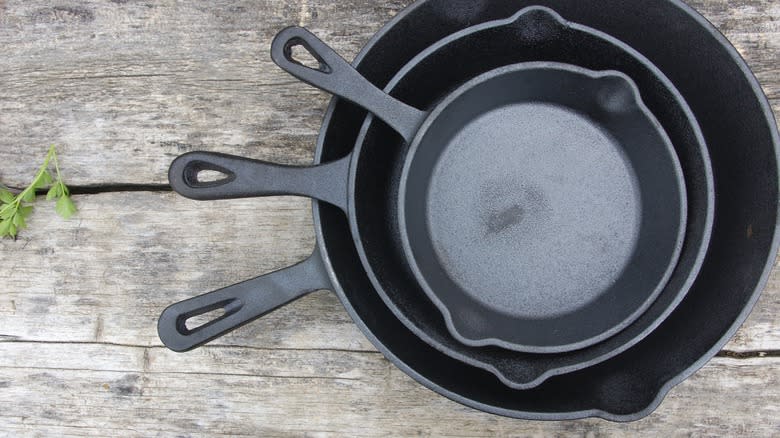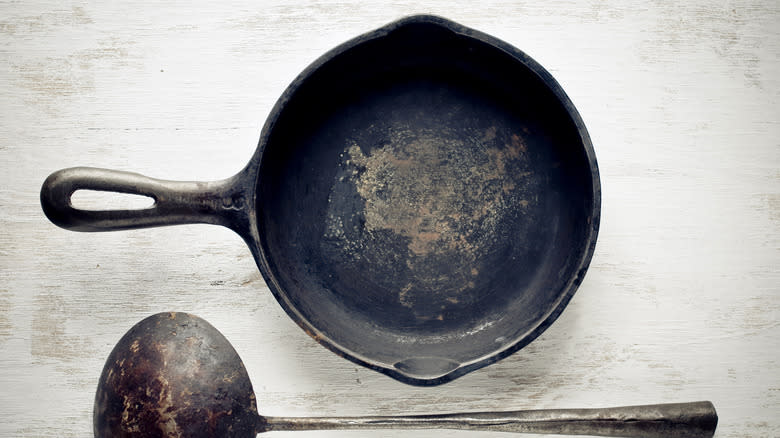What The Rusty Spot On Your New Lodge Cast Iron Pan Actually Is

Cast iron pans are essential for professional chefs and avid home cooks. If you know how to season the pan and avoid certain foods -- specifically hyper-acidic ones -- then the cooking vessel's unique polymerized surface will shine for decades. However, perhaps you caught sight of some dreaded rust, a frequent issue with cast iron. Logically, some neglect might be the culprit for the oxidation. Occasionally rust may appear on a brand new pan, especially one made by Lodge -- a surprising sight.
If your pan's brand new, that brown-tinged discoloration isn't rust at all. Instead, it's due to a processing step the manufacturer employs at the factory. Their products are seasoned before sale, a step accomplished by hanging the pan on a ring and spraying it with oil. Sometimes, the application is a bit irregular, especially around where the pan is hung, causing oil buildup. So that brown spot is not a defective bit of rust, but rather a small blob that'll smoothen away with time. Throw it onto the range and cook with it often to make your cast iron pan better. After a few sizzled-up creations, you'll forget about the defect altogether.
Read more: 15 Best Knife Brands, Ranked
New Lodge Pans Frequently Have An Oil Buildup That Looks Like Rust

While it may occur with other brands, such rust discolorations seem more common with Lodge products. Reddit users report receiving new pans with many tiny brown spots, sometimes sprinkled throughout the edges. And if you acquire a pre-loved pan with some actual rust, no need to fear, as there are many easy rust removal strategies. The truth about cast iron pans is they're more durable than you think.
Very small rusted spots can be simply wiped away with a bit of oil on a paper towel. Sometimes, you might need to give it a bit more elbow grease and work at the location with steel wool or a bit of salt. And if it's really not coming off, then turn to a white wine vinegar bath, which is a more drastic step for when the rust covers a larger area.
Just remember that the more energy you've put onto the surface of the pan, the greater the importance of a seasoning step. Lodge pans come already covered with a layer of vegetable oil, but for a pre-used pan, it's a good idea to reapply an oil with a high smoke point. Plus, whenever you use your pan drizzle on oil during preparation, which will further that surface's magic.
Read the original article on Tasting Table

 Yahoo Lifestyle
Yahoo Lifestyle 
